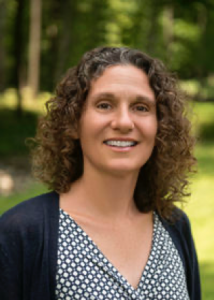By David Fairman and Stacie Nicole Smith
This post originally appeared on Consensus Building Institute’s blog on August 7, 2019. We are reposting it with David Fairman’s and Stacie Nicole Smith’s permission.
CBI’s vision is “a world in which our most difficult challenges are solved through collaboration.” That seems like a fairly tall order, in two ways: collaboration on divisive public issues seems to be in short supply, and there’s skepticism about whether collaboration (people cooperating across differences to achieve common or complementary goals) can deliver solutions.
We know from experience (our own and others) that people who agree on the need to work together to tackle a major public challenge can often bridge their different interests. Using a mutual gains approach, they can negotiate solutions that leave all stakeholders better off than if they’d kept fighting politically or through the legal system to impose a one-sided solution. In many situations, where the goal is mainly to resolve an issue — where does the new wind farm, road, or airport get built, or what level of emissions should be permitted for a new facility — mutual gains negotiation, supported by effective facilitation and mediation, can get the job done. In more conflictual situations, we call that work “dispute resolution.” In situations where there’s a willingness to work together but the interests are diverse and complex, we call it “consensus building.”
Get notified when new articles are posted to the EDR blog – sign up for our email list »
But now, with both high polarization and growing recognition that many public challenges can only be solved if stakeholders on all sides of the issue work together in an ongoing way, we increasingly encounter situations where:
- dealing with the challenge requires long-term cooperation;
- trust is low;
- there’s no shared vision of either the solution or a process to get there; and
- there’s no safe space to start having conversations.
We’ve faced this kind of starting point many times: working with oil companies and communities in the Niger Delta, reimagining education in the U.S. with leaders and advocates who fight regularly over all the fault lines in our current system, or bringing fishermen, environmental groups, and regulators together to plan long-term fisheries management.
In these cases, the only pathway to sustainable solutions lies in collaboration, yet it seems almost impossible even to get started, let alone work together constructively for the long run. It’s clear that we need something more than well-structured negotiation to make progress. We’re calling what’s needed “breakthrough collaboration.”
A New Approach?
We’re at an early stage of our own thinking on the idea of breakthrough collaboration. We know that many of the same building blocks that support effective dispute resolution and consensus building (stakeholder assessment, joint process design, agreed ground rules and decision rules, effective facilitation) are just as important for breakthrough collaboration efforts. But we think there’s more that needs to be done to support breakthroughs in these extremely difficult situations. It seems clear that stakeholders need to:
- build trust in each other, in their joint potential to make progress, and in the collaboration process;
- use creativity to shift their status-quo assumptions and to imagine and explore possibilities;
- negotiate effectively to meet their core interests, manage power imbalances, and lay the foundations for ongoing work together; and
- take joint action to test the viability of working together, to address pressing and/or promising issues, and to integrate learning from that experience into the ongoing collaborative effort.
In CBI’s analytic contributions to the field, we’ve focused more attention on strategies and tools for negotiation and joint action, and less on trust building and creativity. As we’ve started to talk more about breakthrough collaboration among ourselves, it’s become clear that trust building and creativity are equally essential components of a successful process for ongoing collaboration.
Trust Building
In challenging situations, stakeholders can build trust by getting to know each other — sharing family stories, what they do outside of work, and the path that led them to the work they do. Dealing with difficult history, by finding ways for stakeholders to hear and acknowledge different views on harm and what caused it, can help a group move forward without denying or endlessly debating the past. Facilitators often serve as transitive trust builders: participants initially put their faith in the facilitators to ensure a civil conversation and a level playing field and, then over time, learn to trust each other. Encouraging and modeling acknowledgement, addressing negative assumptions and cognitive biases, and discovering shared identities can all be part of this process. Ultimately, the “promise-deliver cycle” is the biggest driver of trust building: when stakeholders commit to do something (from bringing snacks to the next meeting to providing funding for a joint effort) and then do it in a way that others expect and appreciate and then repeat for other tasks, their words and actions together become the glue that keeps the group working on the hardest issues.
Creativity
Creativity enables stakeholders to explore outside of traditional, linear patterns and habitual ideas. It can help a group reframe what seems like an obvious and endlessly stated problem; invent new options when two or three have dominated the conversation for months or years; or find a new way to communicate when sitting around a table talking has just made things worse.
Practically, “creativity” is any innovative approach that helps a group liberate itself from a “stuck” conversation and go somewhere else, without needing to know exactly how that approach will work — and allowing individuals and the group as a whole to interact differently in ways that spark constructive changes in beliefs, opportunities, and/or relationships. Sometimes, groups require a lot of creativity to imagine that the future can be different from the present. We’ve facilitated and supported a range of interesting approaches: using skits or invented “newspaper headlines” to help stakeholders envision success or articulate what a good future could look like; deep reflection on assumptions about “the way things work” that are blocking stakeholders from seeing new paths forward; and, sketching maps or systems to illustrate challenges, opportunities, or ways components might fit together. When these approaches work, stakeholders find them liberating, enjoyable, and illuminating. They lay the groundwork for deeper analysis and negotiation and remind stakeholders that their own imaginations can be a powerful force for seeing beyond obstacles and navigating through them.
Negotiation
Negotiation to meet each other’s interests seems as central to breakthrough collaboration as it is to dispute resolution and consensus building. What’s different, perhaps, in breakthrough collaboration is the way that negotiation as a process has to interact deeply, cyclically, and in sometimes unpredictable ways with trust building and creativity. We’ve had community-company interactions in Nigeria, Honduras, and elsewhere that required many cycles of negotiation on the principles of engagement, the ground rules for the process, who sits at the table, how the agendas are set, and every other process question, before ever getting close to negotiation on the substance. All of these process negotiations were essential to trust building, and in many cases, they required enormous creativity to resolve (a striking recent example is cooking a traditional meal together in Colombia to set the basis for a good conversation between a mining company and community representatives).
Joint Action
Joint action is the deliberate effort by a group of stakeholders to start working together, usually after they have developed some mutual trust, applied creativity, and negotiated agreement on at least some issues, but before they have agreed on an ongoing institutional “home” for their work. For example, stakeholders working to create a movement for learner-centered education decided to begin organizing dialogues on specific difficult issues, such as equity, with others who were not part of their core group, as a way to test their ideas and see how they could best engage with others to expand the movement. On an even more practical level, stakeholders working on groundwater management worked together to generate new information and analysis on the drawdown of the aquifer in question, while still negotiating the institutional arrangements for a new groundwater management district. These initial efforts to work together can generate practical results, strengthen stakeholders’ trust and confidence in each other, and provide lessons for the group’s ongoing efforts.
Collaboration Sustainability
There seems to be one more distinctive element to “breakthrough collaboration”: sustaining the collaboration over an extended period of time. We see three things interacting to create the momentum for sustained collaboration:
- stakeholders achieve joint gains through their initial efforts (we have a good agreement on how to manage the river cleanup),
- they need to continue working together to iterate on or secure those gains (we have to monitor the cleanup effort together), and
- they commit to a forum where they will continue to work together (we’ll create a joint monitoring team that’s satisfactory to all the stakeholders, and we’ll all meet regularly to review what that team finds).
If these drivers can become a virtuous circle, then more gains will help to institutionalize the collaboration in one or more ongoing forums. We helped stakeholders work for more than a decade on groundwater pollution cleanup at a military base. By the time our role ended, not only had the dynamic among the military and stakeholder groups in the community been transformed, but they had created new forums and groups for joint environmental management well beyond the core issue of groundwater pollution. The effort to reimagine education created not only a shared vision, but also a collective commitment by 30 leaders to translate that vision into a growing movement for learner-centered education, and gave them a vehicle for addressing new problems as they arose. Not every collaboration needs to become a completely transformed set of relationships or a new set of institutions to be considered successful, but for us, breakthrough collaborations should, by definition, achieve a high level of sustained progress and institutionalization.
Join the Conversation
These thoughts on breakthrough collaboration are intended as just a starting point for a conversation that we expect to continue with our colleagues at CBI, across the country, and around the world. In the spirit of breakthrough, we want to invite our colleagues, partners, and others interested in thinking with us to do so. We will be offering examples from our work that we think demonstrate breakthroughs and looking at what actually happened to see how well our current framework fits the facts. We welcome examples and ideas from others about the key elements needed to achieve breakthrough collaboration. We look forward to collaborating with you in this exploration.

David Fairman is Managing Director at the Consensus Building Institute and Associate Director of the MIT-Harvard Public Disputes Program. For 28 years, he has built consensus and enhanced collaboration capacity on complex public and organizational issues internationally and in the U.S. His primary focus is building effective multi-stakeholder partnerships, organizational strategies, and dispute resolution systems to meet challenges of sustainable development.

Stacie Nicole Smith is Managing Director at the Consensus Building Institute, where she has more than 18 years of experience as a mediator, facilitator, coach, trainer, and researcher on a broad range of public issues in the U.S. and internationally.
